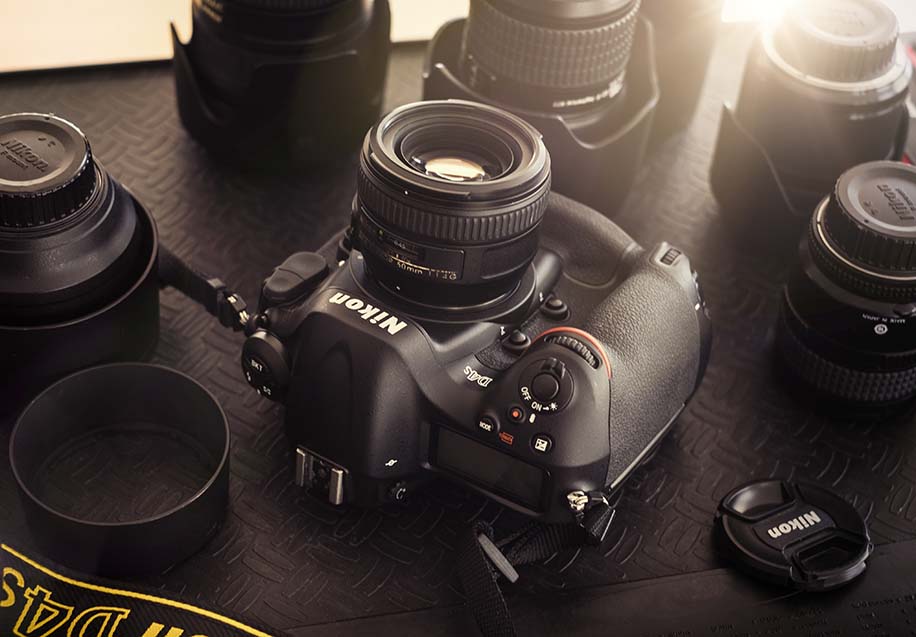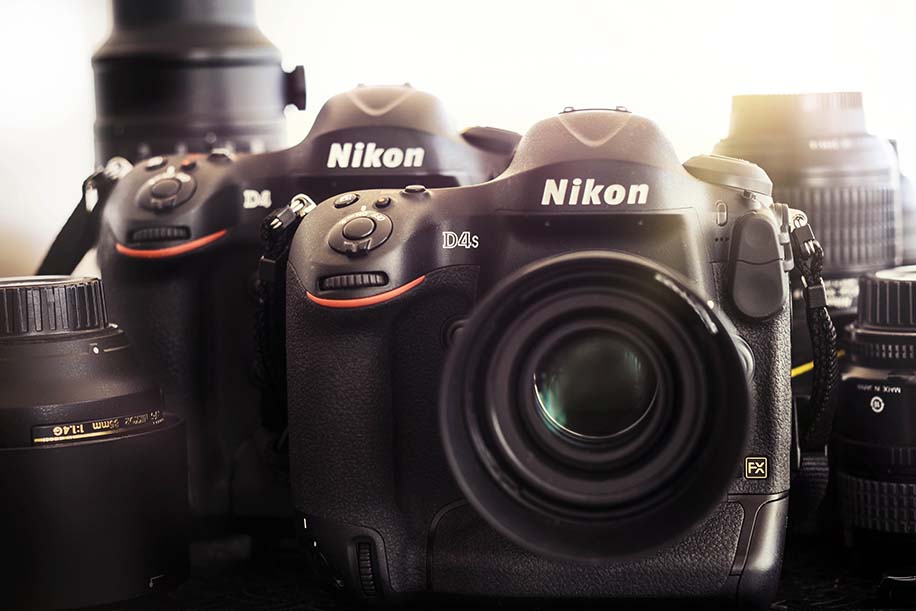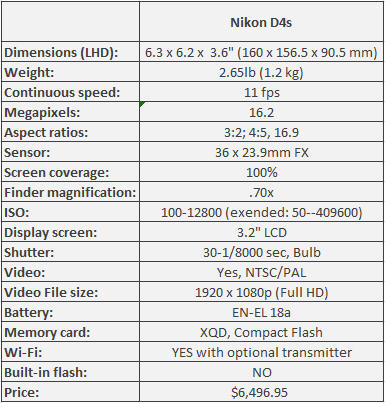Nikon D4S: a hands-on review with comparisons to the D4 by Tom Grill (Web | Blog). As aways, click on images for larger view):
The lineage of Nikon flagship models, the D3, D3s, D4, and now the D4s, are absolute workhorses, and best of breed at what they do. In the hands of a working pro, this camera line represents dependability and exceptional image quality under the worst circumstances you can throw at it, qualities that have endeared themselves to Nikon users since the original Nikon F. At first glance, the jump from the D3 to D3s appeared to be a greater difference than that of the D4 to D4s. We seem to be getting to a point in their development where the changes from model to model give us less to shout about. I think this says more about the confidence we are experiencing with the camera we have in our hands than it does about the advancements made to improve it.
At first glance the changes made to the D4s appear slight, perhaps not even enough to justify a new model. I admit to thinking that myself when I first read the specs. It was not until I put the camera to extensive use for two weeks under my typical work load that I began to appreciate the benefits of the changes. While the new D4s may not be taking a leap forward from the D4, it has certainly made important strides in the right direction.
Most of the ads and video previews announcing the new D4s show it in use on high speed sports subjects. Admittedly, this is an area where the new speedy and accurate group AF system will be apparent in the most dramatic way. I chiefly use a camera like this for lifestyle shooting where similar needs apply. The reason for this is that I like to keep my models moving quickly to convey a sense of candid spontaneity in the situations we create. I also tend to use fast aperture lenses at wide open settings and favor strong backlighting. Capturing that one perfect image in such a fluid situation puts a heavy demand on a camera’s ability to focus quickly and accurately. A wedding or events photographer might face similar needs while working in dimly lit situations with rapidly changing subjects and little to no control over the actual scene. The Nikon D3 and D4 have been my workhorses for this type of work. The D4s introduces changes that improve things even more.
On the surface the D4 and D4s don’t look so different, aside from a redesign of the smaller joystick controls on back, and minor tweaking to both hand grips. The differences are primarily inside.
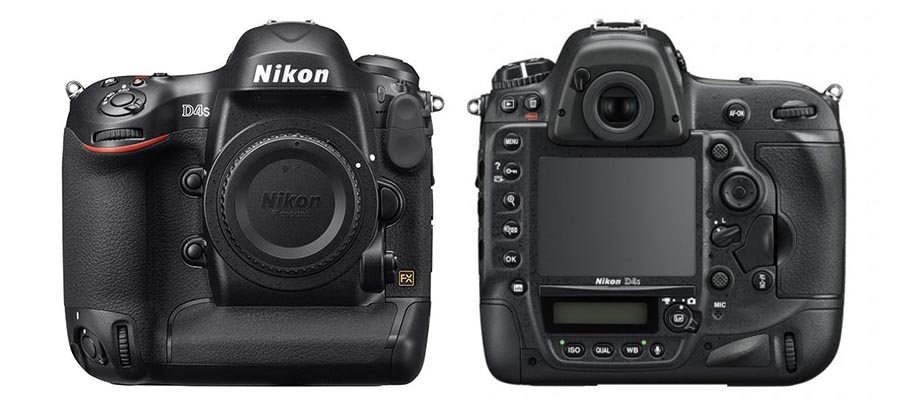
One obvious difference between the D4s from the D4 is the new sound of the motor clipping along at 11fps. The change in sound is attributable to the redesigned mirror box built to accommodate the faster speed by shortening the mirror travel distance. The other thing that came as a surprise was how long the D4s could keep on shooting and processing RAW files when there was a fast card in the slot. Nikon may have to do a take on the Energizer Bunny ad for the D4s.
Here are some of the important improvements in the D4s over the D4:
– The 51-point autofocus system remains the same as the D4, however it adds a new Group Area AF mode grouping 5 points together to act as one unit to improve AF ability in confusing areas. This may be the most important change in the new model as it allows extremely fast lock-on and follow with any moving subject even under the worst lighting situations.
– The D4s shoots at 11fps with continuous AE and AF.
– The mirror assembly has been redesigned to accommodate the increased speed to 11fps and has a side benefit of keeping the mirror in its open position for a longer time between shots thereby minimizes the blackout time caused by the mirror in the up position.
– There is a new Expeed 4 processing engine, and while the megapixels remain at 16.1, it has been redesigned to work even better in low light so that a new top extended ISO speed of 409,600 has been added. The full range is 100-25,000 with extended from 50-409,600.
– The D4s takes a new battery, the EN-EL18a, to extend use time out to 3020 shots, up from 2600 from the older EN-EL18 with which it remains compatible.
– There is a new uncompressed 12-bit RAW mode for capturing smaller RAW files that are 1/2 the size of standard uncompressed RAW files. Handy if you want to speed up workflow or save storage space. In addition there is the standard 14-bit compressed and uncompressed files, JPEG, and TIFF.
– An auto-ISO feature has been added and works when the camera is in manual mode. I find this handy when I want to lock in a specific shutter speed and aperture combo and let the ISO float a bit to keep the exposure consistent, as sometimes needed with time-lapse photography. This feature will also help video photography where the light is changing while the camera is recording. The aperture can stay fixed while the ISO changes seamlessly to adjust for the variations in light.
– Addition of a 1080/60p video recording for up to 10 minutes at 42Mbps or 20 mins at 24Mbps
Specifications:
Testing for low light:
I found that the upper practical limit of the D4s without much, if any, correction for noise is about 6400. This always depends upon the type of lighting situation, of course, but I suspect the ISO can be pushed even higher in certain situations so long as you are willing to massage the image somewhat in post-processing.
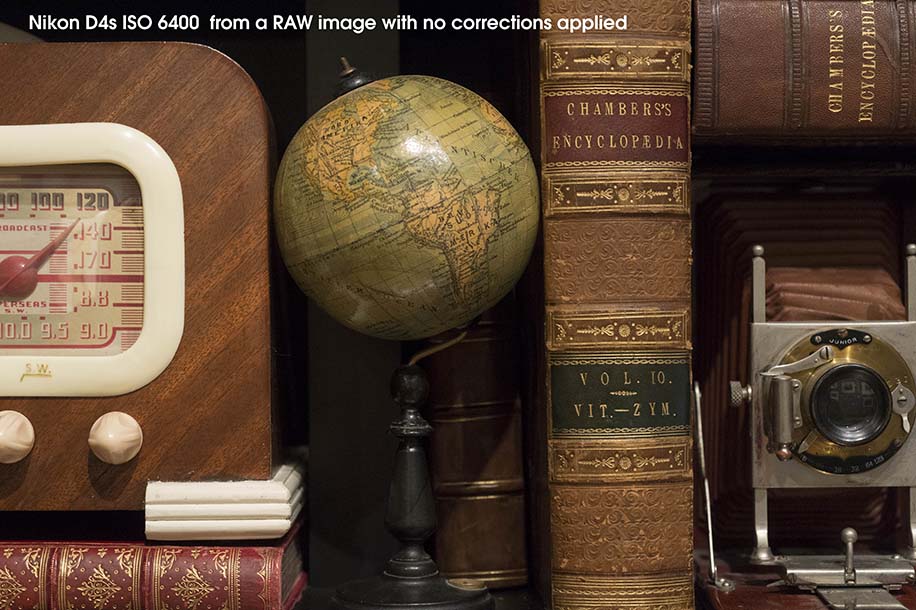
Download a high res version of this image by clicking here.
The image below shot at ISO 51200 demonstrates this. I applied some standard improvements, as I normally might, to the noise and detail using Adobe Camera Raw before taking the image into Photoshop.

This is an image shot at ISO 51200 with post processing corrections applied. Download a high res version of this file by clicking here.
The new top extended ISO of 409,600 (as opposed to 204,800 on the D4) might make for attention getting copy in a press release, but I don’t see much use for it from the results I’ve seen.
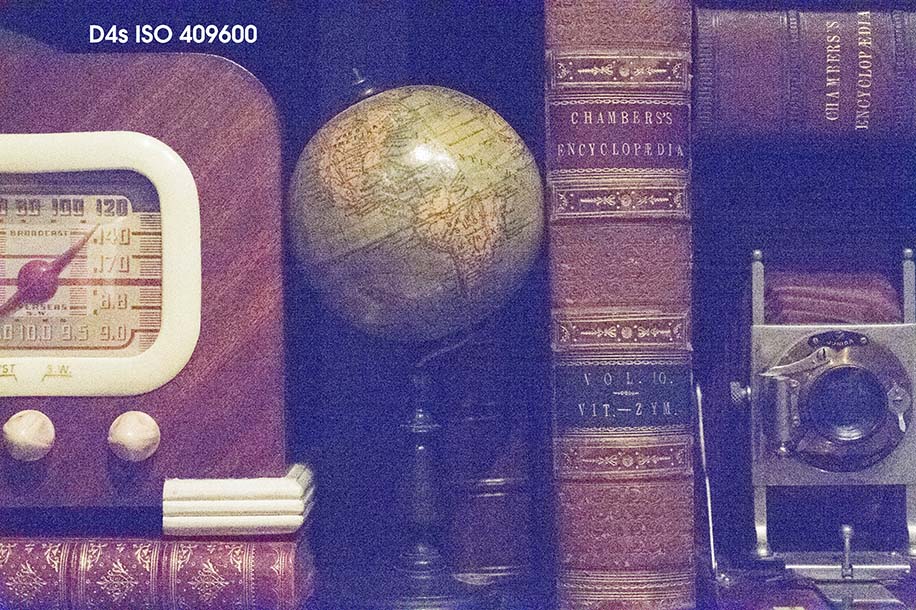
This is what an ISO 409600 image looks like from the D4s — flat, ultra noisy, with color casts. The ultimate usage is going to have to be very small for the photo to be usable at all, even after applying some corrections.

This is a full size crop from the image above it to show how the noise level from ISO 409600 appears (click for larger view). Have fun fixing that!
Putting the D4s to work:
The most obvious use of a camera like the D4s is fast-paced sporting events and wildlife photography. My own commercial work is different from that and consists mostly of lifestyle photography, over 90% of which I currently do with a D4, often shooting over 4000 frames per day. I prefer working with available light and like to keep the models constantly moving to add a feeling of spontaneity to the resulting images. The excellent low noise and low light capability, superb auto-focus system, and super fast 11fps motor make the D4s an absolutely perfect choice for this type of shooting. The situations are similar to what a wedding photographer might face in candid shooting, or an events photographer working in low light. With this in mind I decided to test the D4s over four different lifestyle shoots with varying available light. Some of the results are below.

The image sequence above shows what a camera is up against in a fast moving lifestyle scene that leads up to the finished image shown below. In this scene the D4s was shooting at 11fps. There are 12 shots in the sequence so it took only a hair over 1 second to photograph. The scene is entirely back lit from a window and no fill from the front. The 85mm lens was set to an aperture of f/2. At this close distance that left zero tolerance for depth of field. A continuous focus point was placed on the model’s eye and had to keep changing the distance as the model’s head moved forward towards the camera and her hand came up to further block the view. Although the model’s face only moved forward four or five inches, with the distance of the lens, the focal length, and speed of action that is considerable. There were actually 118 images in the entire sequence of the model laughing and rocking her head back and forth, and every shot remained in focus.


Not only is the couple scene above back lit, but I am shooting past some out-of-focus foreground glassware to create the softness surrounding the models. As always, I instructed the models to keep moving and had to follow with a continuous focus point placed on the woman’s eye.

It wasn’t bad enough that this scene above was lit only by the window behind the model, I decided to add in a tungsten lamp to create a flare and flatten the contrast on his face even more. The 85mm lens was set to f/1.8 and focus placed on the right eye with plenty of obstructions caused by the foreground computer screens.

To obtain a shallow depth of field along with the blur motion in the person walking I put a variable ND filter on the 85mm lens set to f/1.8 and turned the filter until it gave me a shutter speed of 1/20th second to create the blur. The foreground model was instructed to hold her pose and not move. This scene was taken in a very dimly lit room with light coming only from the windows behind the models.

We staged this guitar scene in the studio just to test the auto-focus performance of the D4s. The guitarist is entirely back lit with the tungsten lamps in the background, smoke was added to add a layer of haze, and the rest of the room was blacked out for darkness. The camera was set to ISO 1600 with the 85mm f/1.4 Nikkor lens. Blazing away at 11 fps, the D4s almost never missed its focus on the guitarist’s face.
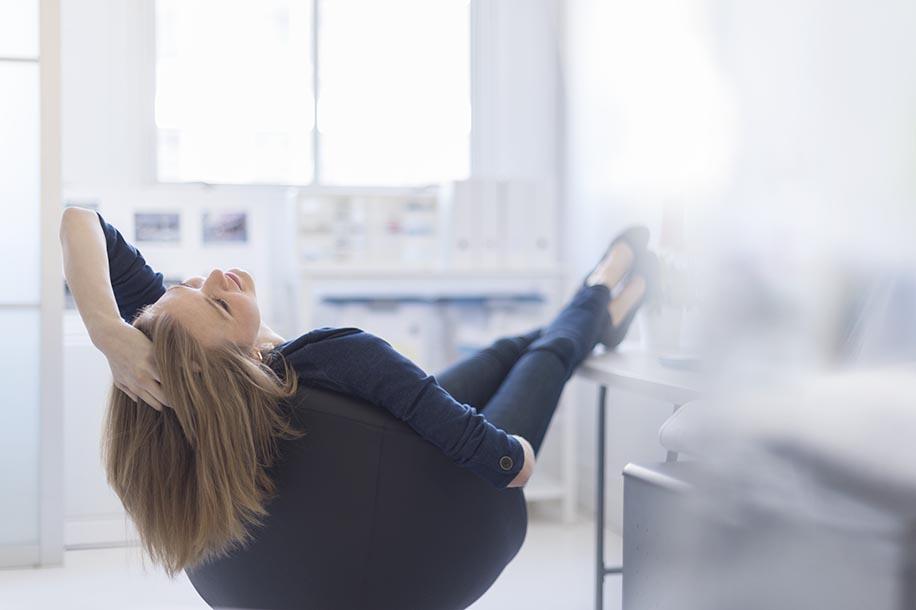
Typically in a scene like the one above I would have a difficult time achieving focus on the model’s eye. The D4s consistently found the spot and kept the eye — in this case the eyelashes — in focus even while working at a lens aperture of f/1.6. And in the scene above the model was not sitting still, but constantly moving about.
Conclusion:
On paper the differences between a D4 and D4s appear so tame you begin to wonder why Nikon would even bother introducing a model change. But the D4 series is the workhorse cornerstone of many pro photographers, me included. It probably isn’t a question of whether or not the changes are needed. Rather, it is more a question of whether or not the changes improve your workflow. For me, moving from 10 fps to 11fps is overkill. I still find the 9fps of the D3 more than sufficient. But there are photographers shooting fast action sports and wildlife for whom this improvement would be significant.
Working as I do in low light with high speed aperture lenses, my chief concern was with the improved AF of the D4s. This is one of the reasons I tested the D4s over several lifestyle shoots with dim back lighting. In these situations I know I am going to lose a large percentage of the take to missed-focus so I always overshoot the scenes as a way of bracketing the focus. The D4s was considerably better at delivering in-focus results in these situations, so much so that by the fourth lifestyle shoot I began feeling comfortable enough to cut back on my normal focus bracketing. At the end of the shoot I ended up with 25% fewer frames than I normally would have taken. That reflected the instinctive confidence I had in the D4s AF ability.
I also appreciated the faster write speed to high speed memory cards. This allowed me to keep on shooting as long as the models continued to deliver the action. Having to ask the model to stop and wait while the buffer is transferring to the memory card is can be disruptive to the fluidity and mood of a scene.
Bottom line question is: Based on the improvements, would I trade in my D4 for a D4s? If there were enough life left in my D4, I would say probably not. The new conveniences of the D4s, while nice, are not something I absolutely need. If my D4 were older, then I would do the trade even though the newer D4s model is priced around $500 higher at $6496.95. The extra cost would most likely be made up down the road when the Nikon D5 comes out.
Since writing the above paragraph, I have gone back to shooting my D4 Nikon in similar lifestyle situations. When looking the images over afterwards I realized that the D4s had been delivering a higher percentage of images that were in proper focus. I might have to rethink my position about trading in the D4 on the D4s to sooner rather than later.

Bottom line here is that while the D4 has exceptional low light capabilities, fast and accurate auto-focus with tracking, is incredibly durable in the worst of conditions, and an absolute photographer’s dream to use, the D4s is even better. Are you ready to spend what it takes to upgrade now to enjoy the improvements the D4s can deliver? The improvements are not such that it is a slam-dunk kind of decision. It is going to come down to our individual needs from a camera, how it will impact our workflow, and whether the effect on our bank account is worth it. Sounds like we’re all going to have a fun time deciding on this one.
If you have an interesting idea for a guest post, you can contact me here.
